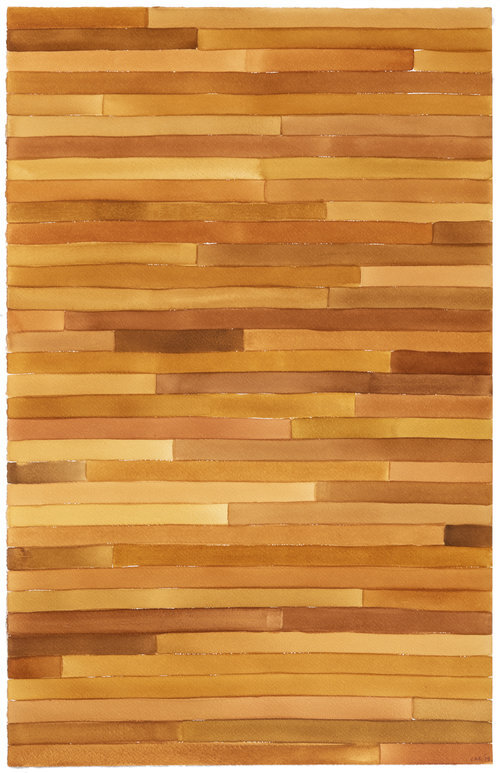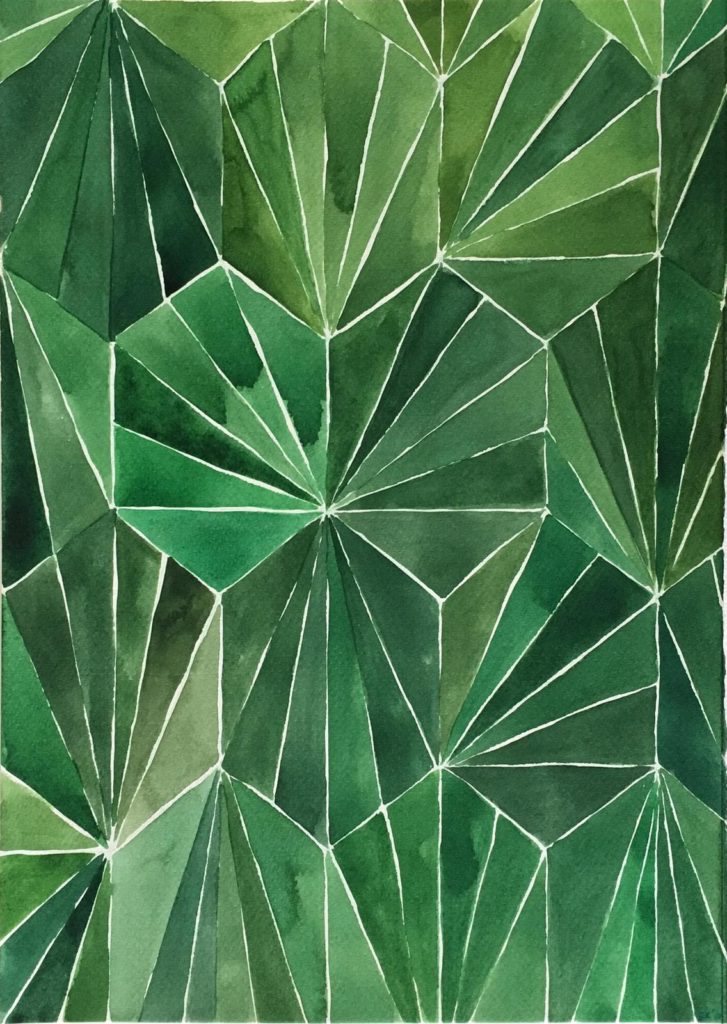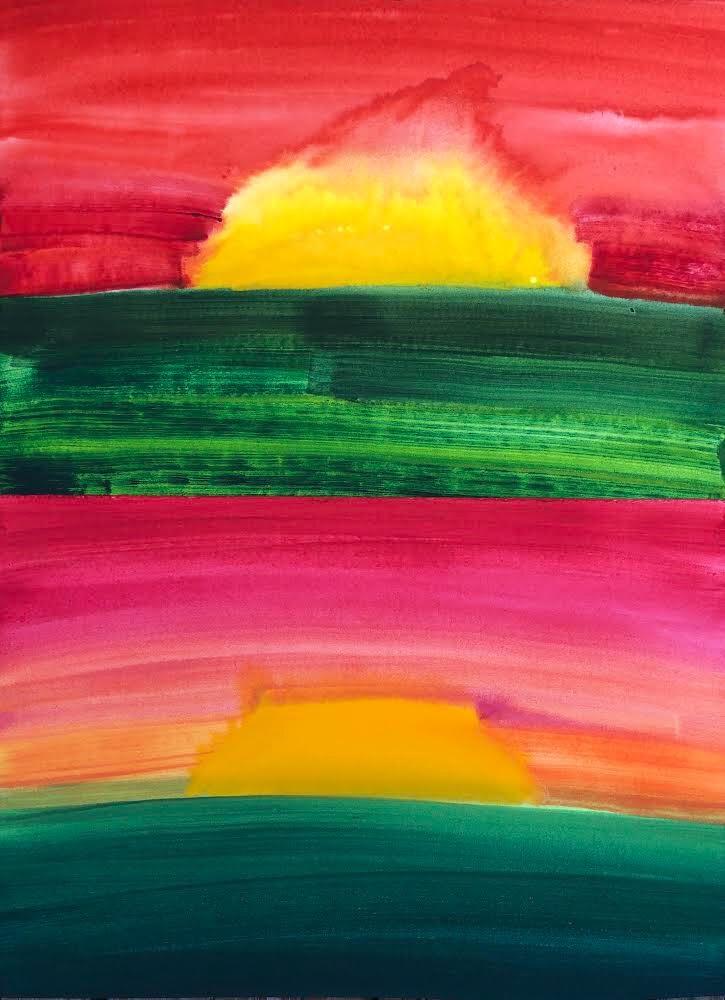

ONLINE DISCUSSION SERIES #2: BRIDGING THE GAP BETWEEN ARTISTS AND COLLECTORS
Featuring artists Chloë Reid and Nabeeha Mohamed in conversation with Olivia Barrell from the CUR8.ART team discussing the impact of lockdown in South Africa on contemporary artists.
Olivia Barrell: We would like to dedicate this discussion series to talking about shifts that have recently been taking place in the South African art world, there seems to be a breaking down of sorts of previous trends and patterns in collecting, the art world seems to have become less static – and we would really like to explore this concept in more detail during today’s discussion. It is interesting that we each come to the South African art world from different angles. I come from a more theoretical background as an art historian who then entered the secondary art market where I worked for Strauss & Co auction house. Nabeeha Mohamed is a contemporary artist based in Cape Town and Chloë Reid as an artist and curator based in Johannesburg.
How has the art world shifted over the past several weeks given the current circumstances of lockdown in South Africa?
We can analyse these shifts to both the artist and the collector with a viewpoint from the artists themselves, Chloe as a curator brings in an additional perspective from the primary art market and I would like to contribute with my experience from the secondary art market.
Chloë Reid is from Johannesburg, she studies first at Michaelis and then went on to study at the Glasgow School of Art in Scotland and she came back last year after being awarded a year-long fellowship at the Glasgow Sculpture Studios during 2018. She has exhibited and curated locally and internationally and in 2019, she established gallery, gallery with the aim of developing an embodied framework for artists, writers and curators that foregrounds collaboration and exchange. I was interested in contacting Chloë because of her multi-disciplined approach to the art world.


CHLOË REID
Strip Flooring (2019)

CHLOË REID
Ultra Liquors Park View (2019)
Nabeeha Mohamed is an artist from Cape Town who also studied at the Michaelis School of Fine Art. She has exhibited locally and internationally and is represented in South Africa by SMITH studio. I was excited to bring Nabeeha into our conversation because I’d heard a lot about her from some of the art collectors I’ve worked with who have mentioned their excitement about her work and she is an artist who is very present online and active on social media and in particular, Instagram, and that’s something I wanted to talk about.


Nabeeha Mohamed
Nights (2018)

Nabeeha Mohamed
Tom Ford, Darling! (2020)
So thank you to both Chloë and Nabeeha for joining today.
So maybe just to start I’d like to ask you Chloë to elaborate on your moving between different roles in the art world – to define what those roles are for us?
Chloë Reid: I work as an artist, producing my own work, as a curator – in collaboration with other artists and curators and as a consultant or associate curator for Art Gazette.
I work across mediums as an artist, namely in drawing, printmaking, video, audio, written fiction and occasionally, painting. I am interested in socio-physiology, that is, patterns in regular, intuitive, everyday action. In my work as an artist, this manifests in a kind of visual or textual looping.
I also work as a consultant for a company called Art Gazette which is a curated catalogue of contemporary artworks that provides curated collections of work to public and private spaces. Art Gazette purchases art directly from artists on a regular basis. The work submitted by artists generally sits outside of their core practice as experimental or process work, offering a steady, basic income to support their more ambitious gallery or museum-oriented work.
My work as a curator developed from my practice as an artist when I began to think more seriously about the experience of the audience or ‘reader’ of an exhibition or artwork and how that experience can be conditioned or played with as a kind of medium in itself. Curating offers a unique space for collaboration and research. It’s not just about dropping my works off at a gallery – I became interested in how my work is experienced by the audience.
Olivia Barrell: Nabeeha, is the curating process something you are very involved in as an artist within the gallery space?
Nabeeha Mohamed: It depends on what framework the work exists, for group shows I do not have that much control over the curating. But for a solo show within a gallery space, I would like to have a say on how the conversation is started from the first piece to the last. I have had a good experience with the team at SMITH gallery in terms of assistance with curating.
Chloë Reid: Curating teaches us that there are different ways of showing work, there are multiple ways of showing work and this lockdown time has pushed us to realise this. It is useful for an artist to exhibit in a gallery, an established space, beyond providing a platform for sales, it offers a space to create resolution in your work as an artist – you are given a space and a time. It forces you to present your work and try to reflect on it. The objective input an artist gets from curators is also very valuable.
Olivia Barrell: Nabeeha I’d like to ask you to talk a little about your practice as an artist and how and where you exhibit your work?
Nabeeha Mohamed: Before working with a gallery I never realised that I would have works being sold to collectors who I would never meet, but have come to see that this is a common occurrence. During this time of lockdown, I have started selling more experimental work through Instagram, which has connected me with new younger collectors and I have been enjoying this interaction with collectors.


Nabeeha Mohamed
Bollywood Rockstar (2020)

Nabeeha Mohamed
mr. yessiree (2020)
I love when people send me images of my work up in their homes, to see the work existing in a domestic space. Candace Marshall, who owns SMITH Gallery, has taken time during this lockdown to share on her Instagram account some of the artworks that hang in her home, giving a little insight into what each of the works means to her. It’s been such a treat to read and has made me realise how much I’d love to hear about what draws a collector to works of mine that they own.
Olivia Barrell: As a collector, just speaking from my own experience working with art collectors and I have dealt with a broad range of different types of collectors from younger aspiring collectors who are able to purchase one or two artworks a year – right through to very experienced collectors who have hundreds of works in their collection – I have often seen that they are very excited about finding new artists. Collectors are often interested in seeing what is taking place in the contemporary art world because is very much alive and shifting all the time and many collectors want to be involved in this because understanding where their art came from, gives an extra dimension to their collections in a way. We all know that there has been a boom in African contemporary art during the past few years and the taste amongst collectors has definitely grown for local contemporary art. With that, there has come a shift in the interaction between collectors and artists as the artists are alive and currently producing work and the collectors can now become part of that process.
Nabeeha, how as an artist are you able to reach collectors?
Nabeeha Mohamed: I began working with SMITH about two years ago, participating in several of their group shows and the relationship grew very organically from there. They are a wonderfully nurturing and supportive team. Towards the end of last year, I also started working with Netherlands-based gallery Nuweland, who presented my work at Art Rotterdam as well as on the online platform for the New York leg of 1:54, the physical fair which of course had to be cancelled because of the pandemic.


Olivia Barrell: I would like to talk about shifts to the South African art world, the most recent shift which has been a very radical shift is obviously that of the pandemic and the question of how artists have been producing and selling work during the lockdown.
Nabeeha, you are based in Cape Town and have been involved in a number of different artist lockdown initiatives. Can you talk about how lockdown has affected your practice and the various activities you’ve been involved in as a result of the lockdown?
Nabeeha Mohamed: I’ve been focusing on smaller works during lockdown for two main reasons. One, a lot of the work I’ve been doing has been for charity or fundraising for small businesses that have been affected by COVID19 and two, smaller works are simply more affordable. That’s why I think a project such as #CoronaCommissions is so fantastic. It recognizes people’s desires for joy and beauty during these times but functions as a real solution to helping those who are most in need. #CoronaCommissions was started by a friend and fellow artist, Koos Groeneweld, who began doing portrait drawings of people in exchange for an R580 donation towards Corona Care. The project has since grown quite phenomenally and artists have set their own parameters within this loose framework.
I’ve also donated work towards the DOnation Fundraiser and Clarkes Bookshop, both of which functioned as online auctions. The Clarke’s Bookshop auction is currently live on Aspire Auctions website and there are some wonderful works to be picked up so I really do encourage collectors to check that out!


Chloë Reid
GREEN TILE FLOOR (BATHROOM), DIPTYCH (2020)
AVAILABLE ON CLARKE’S AUCTION

NABEEHA MOHAMED
HALF OF A YELLOW SUN (2020)
AVAILABLE ON CLARKE’S AUCTION
Olivia Barrell: Chloë, you are based in Joburg and are connected to a large network of artists, how has lockdown affected the way artists are producing work?
Chloë Reid: I think different artists have reacted in very different ways. For most, it seems to have been a productive time. Artists have used the time and suspended commitments to exhibitions or fairs to reflect on their practices. This kind of reflection can be very hard to come by when you are part of a demanding art world. Those whose situations are more precarious might have sped up their production, sought out new ways of working in confined, busy and domestic space, with limited resources. This kind of pressure can work to push their practice into a new area, or into experimentation with new media.
The lockdown period has given me a kind of focus on production in my work that I haven’t had for some time. I’ve made and sold more over the past months than I have in a while. This is mainly due to financial pressure and the loss of various other sources of income. I have been forced to be much more pro-active and less inhibited in the way that I expose my work which for me is ultimately a good thing.
I think it has offered an opportunity for artists to consider different ways of disseminating their work. The challenge for curators has been how to create meaning and resonance out of the virtual experience of artworks. I don’t have a solution to either of these conditions but I think that artists and the platforms for art in South Africa can only benefit from being challenged to reimagine their roles.
Artists have also had to work with what resources and materials are available. As the initial 21-day lockdown continued, artists started swapping supplies with each other. So there was a type of community that came out of lockdown in a sense.
Olivia Barrell: Another point I would like to raise and I have personally experienced this the past few weeks with CUR8.ART, that collectors maybe now have more time to find new artists and explore the art world for themselves through platforms like Instagram – and I would like to explore the role that Instagram can play in today’s art world, especially in the contemporary art scene, in connecting artists with collectors.
Nabeeha, how important do you find Instagram as a tool for your practice?
Nabeeha Mohamed: I am fairly active on my Instagram account, which I enjoy as a platform to not only show finished works but also a little more on my process and experimental pieces. With galleries, I think there can be quite a disconnect between artists and collectors and I really enjoy the immediate interaction with an audience that a social media platform like Instagram provides. I have seen a change in other artists who have used this time of lockdown to be more active on Instagram.
Olivia Barrell: Chloë, how important was Internet presence for artists before lockdown versus what it needs to be now for artists to exhibit their work?
Chloë Reid: I’m not a screaming fan of the Internet where art is concerned. Unless the work or exhibition in question manipulates the Internet as a kind of medium – which is an engaging and growing discipline, I don’t think that it can replace the physical experience of a work of art. That is, I very much value the arrangement of a work of art in relation to other works of art and people in an environment, the experience of discussing the work with people when it is in front of you or occasionally, with the artist, or things like overhearing conversations about your work or a work that resonates with you in an exhibition space. I feel this even more strongly after lockdown but I think the Internet offers other things. I prefer to see it as a complement rather than a supplement!
As a curator, I will use an artist’s website to get a sense of their professional life as an artist and possibly Instagram for the same but what Instagram offers is a window into the artist’s broader practise, possibly their thinking and references behind their work – a messier and more nuanced view.


Looking at Instagram and official website of artists



